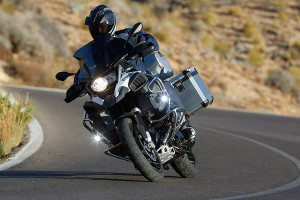Among the most important risk factors for motorcyclists are high speed and young riders, while drunk riding is not a common problem. A new report contains updated versions of five chapters of the Handbook of Road Safety Measures about motorcycle safety.

Among the most important risk factors for motorcyclists are high speed and young riders. Photo: BMWBLOG
Literature studies were conducted with a focus on studies that have empirically investigated relationship to and effects on crashes and injuries. Among the results are the following findings:
Drunk and drug riding occur and are accompanied by high crash risk, but are less common than for example among car drivers (12% vs. 19% in severe accidents).
- Other road users often fail to detect motorcycles and motorcyclists are more vulnerable to injuries than other motor vehicle occupants.
- Sports bikes have higher risk than most other motorcycles, mainly because riders of such bikes often are young and enjoy high speed. Despite the relationship between speed and crash risk, engine volume or capacity were not found to be related to crash involvement.
- Daytime running lights were found to reduce multi-vehicle crashes by about 40%. Motorcycles helmets reduce the risk of fatal head injuries by about 60% (also on all-terrain vehicles) while neck injuries are unchanged or reduced.
- Protective clothes protect mainly against minor injuries and open wounds, but have only limited effect on serious injuries and fractures.
- Antilock brakes for motorcycles were found to reduce injury crashes by about 30%
Report on motorcycle safety
TØI Report 1517/2016. Motorcycle safety
Author: Alena Høye
Link to summary in English
(the report is written in Norwegian)
 Contact:
Contact:
Alena Høye
alh@toi.no
TØI, Norway






Follow us: